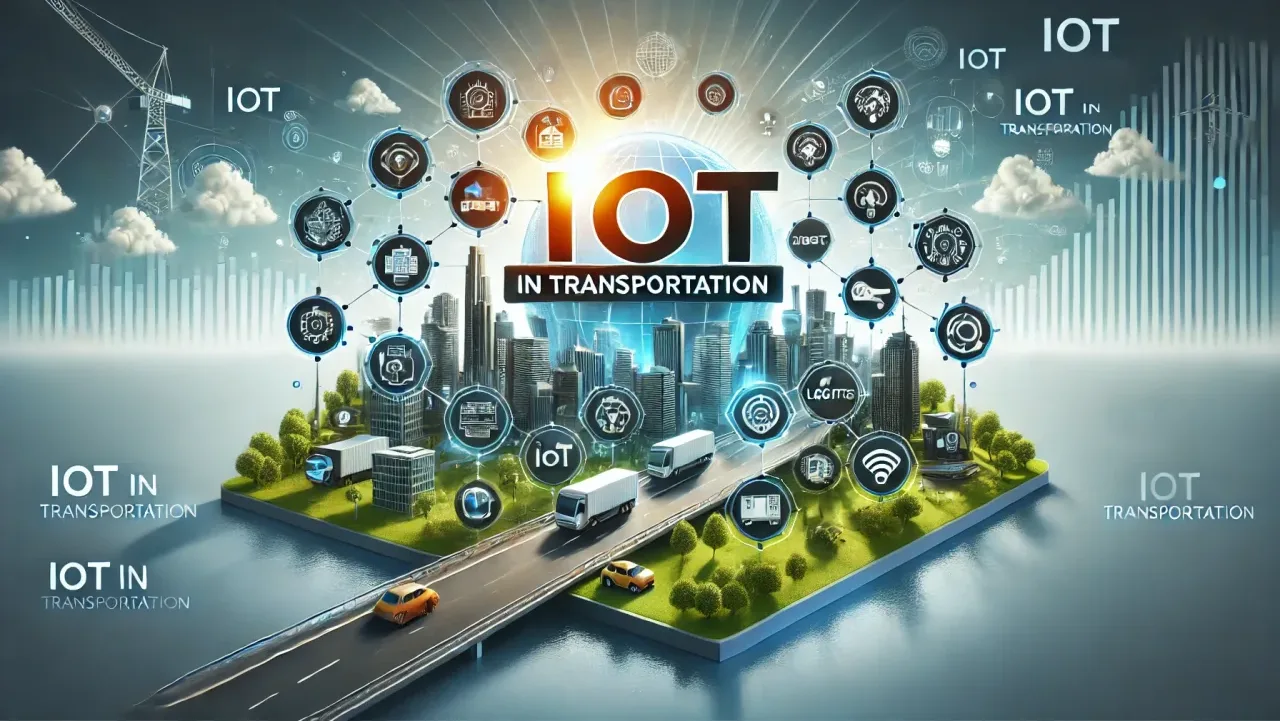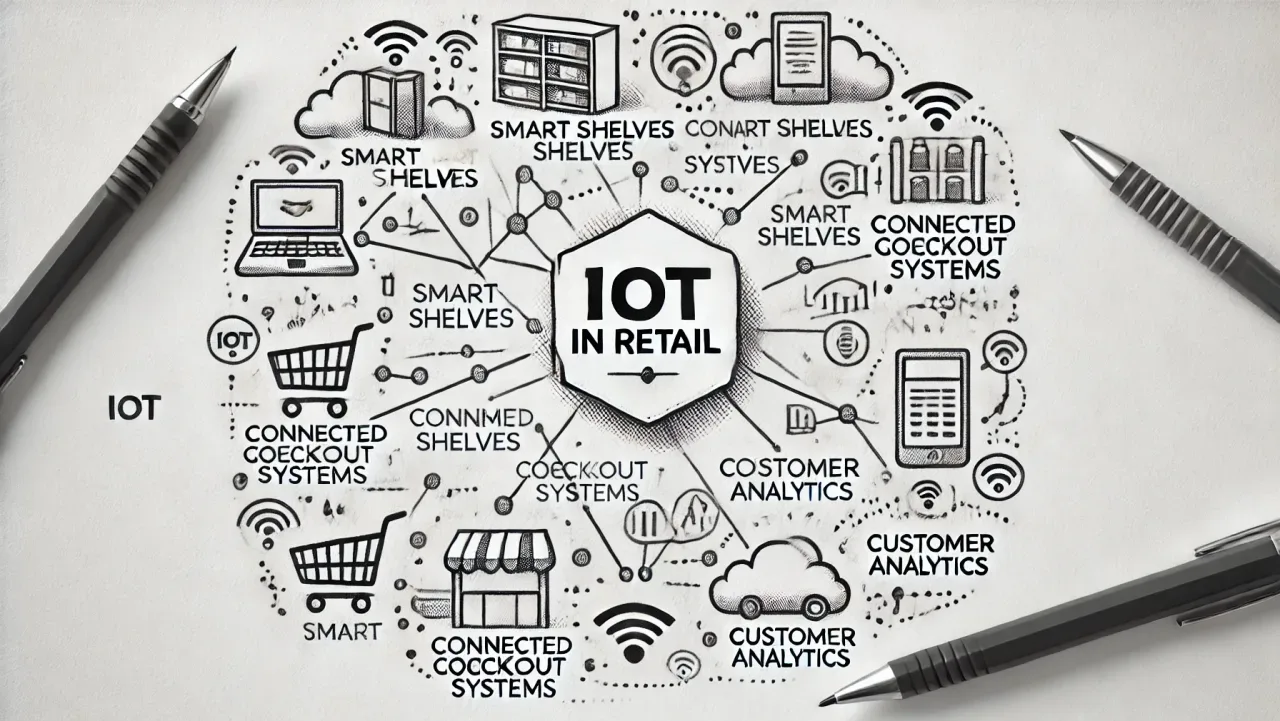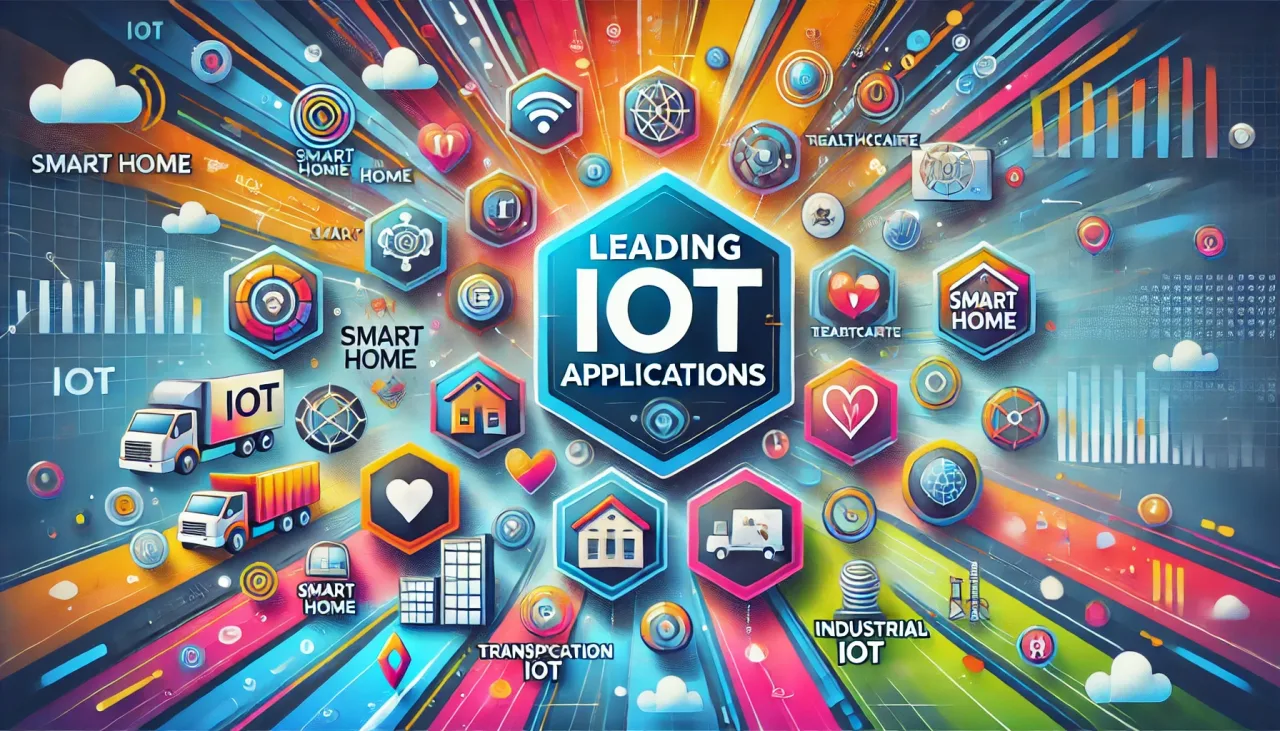In this Article
Introduction to Leading IoT Applications
The Internet of Things (IoT) is revolutionizing the technological landscape, driving innovation across diverse sectors. From smart homes to industrial automation, Leading IoT Applications are transforming traditional systems into intelligent, interconnected networks. Understanding where IoT can be used and its top applications can help businesses and individuals harness its full potential. This comprehensive guide explores the top five Leading IoT Applications and how they are reshaping different sectors. By leveraging IoT, companies can gain a competitive edge, while consumers can enjoy enhanced convenience and efficiency in their daily lives. As IoT technology continues to evolve, its applications are expanding, creating new opportunities and addressing challenges across various industries. The integration of IoT solutions is enabling smarter decision-making, optimizing resource use, and enhancing overall operational effectiveness.
IoT in Manufacturing
Overview of IoT in Manufacturing
IoT technology is revolutionizing the manufacturing industry by enabling smart factories, where machinery, systems, and humans work together seamlessly. By integrating IoT devices, manufacturers can achieve real-time monitoring, predictive maintenance, and enhanced operational efficiency.
Key Applications of IoT in Manufacturing
- Predictive Maintenance: IoT sensors monitor equipment health, predict failures, and schedule maintenance before breakdowns occur, reducing downtime and maintenance costs.
- Example: A car manufacturing plant uses IoT sensors to monitor the condition of assembly line machinery. If the sensors detect any anomalies, they alert maintenance teams to address potential issues before they cause significant downtime.
- Asset Tracking: IoT devices track the location and condition of assets in real-time, optimizing inventory management and reducing losses.
- Example: A logistics company utilizes IoT-enabled GPS trackers to monitor the location of its delivery trucks. This helps in optimizing routes and ensuring timely deliveries.
- Quality Control: IoT-enabled quality control systems detect defects and ensure that products meet the required standards.
- Example: A beverage manufacturer uses IoT sensors on production lines to monitor the quality of drinks. The system automatically rejects any defective products, ensuring only top-quality items reach consumers.
Benefits of IoT in Manufacturing
- Increased Efficiency: Real-time data collection and analysis streamline manufacturing processes, reducing waste and improving productivity.
- Cost Savings: Predictive maintenance and optimized resource management lead to significant cost reductions.
- Enhanced Quality: Continuous monitoring and automated quality checks improve product consistency and reduce defects.
IoT in Healthcare
Overview of IoT in Healthcare
The healthcare industry is leveraging IoT to improve patient care, streamline operations, and enhance medical research. IoT devices enable remote monitoring, telemedicine, and real-time data collection, transforming how healthcare services are delivered.
Key Applications of IoT in Healthcare
- Remote Patient Monitoring: IoT devices monitor patients’ vital signs and send data to healthcare providers in real-time, enabling timely interventions.
- Example: A heart patient wears a smartwatch that monitors their heart rate and sends alerts to their doctor if any irregularities are detected.
- Telemedicine: IoT technology facilitates virtual consultations and remote diagnosis, making healthcare more accessible.
- Example: A rural health clinic uses IoT devices to connect patients with specialists in urban areas, allowing for remote consultations and diagnosis.
- Smart Medical Devices: IoT-enabled devices, such as insulin pumps and smart inhalers, provide personalized treatment and improve patient outcomes.
- Example: A diabetic patient uses an IoT-enabled insulin pump that adjusts insulin delivery based on real-time blood glucose readings.
Benefits of IoT in Healthcare
- Improved Patient Outcomes: Real-time monitoring and data analysis lead to timely medical interventions and better health management.
- Increased Access to Care: Telemedicine and remote monitoring make healthcare services accessible to people in remote areas.
- Operational Efficiency: Automation and real-time data collection streamline healthcare operations, reducing administrative burdens and costs.
IoT in Transportation
Overview of IoT in Transportation

Ai Image by Dall-E
The transportation industry is adopting IoT to enhance safety, improve efficiency, and reduce environmental impact. IoT applications in transportation include fleet management, traffic monitoring, and smart logistics.
Key Applications of IoT in Transportation
- Fleet Management: IoT devices monitor vehicle health, driver behavior, and route efficiency, optimizing fleet operations.
- Example: A logistics company uses IoT sensors to track the location and condition of its delivery trucks, ensuring efficient route planning and timely deliveries.
- Traffic Management: IoT sensors collect data on traffic patterns and road conditions, enabling real-time traffic management and reducing congestion.
- Example: A city implements IoT-enabled traffic lights that adjust in real-time based on traffic flow, reducing congestion during peak hours.
- Smart Logistics: IoT technology tracks shipments and monitors environmental conditions, ensuring the safe and timely delivery of goods.
- Example: A pharmaceutical company uses IoT sensors to monitor the temperature and humidity levels of vaccine shipments, ensuring they remain within safe parameters during transit.
Benefits of IoT in Transportation
- Enhanced Safety: Real-time monitoring of vehicles and drivers through IoT systems significantly improves safety standards, reducing the likelihood of accidents and enhancing overall transportation safety.
- Operational Efficiency: Optimized routes and predictive maintenance enabled by IoT technology help to reduce fuel consumption and operational costs, streamlining transportation and logistics operations.
- Environmental Impact: Efficient logistics and advanced traffic management systems reduce emissions, lowering the environmental footprint and contributing to more sustainable transportation practices.
IoT in Agriculture
Overview of IoT in Agriculture
IoT is transforming agriculture by enabling precision farming, improving resource management, and increasing crop yields. IoT applications in agriculture include soil monitoring, smart irrigation, and livestock management.
Key Applications of IoT in Agriculture
- Precision Farming: IoT sensors collect data on soil conditions, weather, and crop health, enabling precise application of water, fertilizers, and pesticides.
- Example: A farm uses IoT sensors to monitor soil moisture levels and weather conditions, optimizing irrigation schedules and reducing water usage.
- Smart Irrigation: IoT-enabled irrigation systems monitor soil moisture levels and automate watering schedules, conserving water and optimizing crop growth.
- Example: An IoT-enabled irrigation system waters crops based on real-time soil moisture data, ensuring optimal growth conditions and reducing water waste.
- Livestock Management: IoT devices track livestock location and health, improving herd management and reducing losses.
- Example: A ranch uses IoT-enabled collars to monitor the location and health of cattle, ensuring timely interventions and reducing losses.
Benefits of IoT in Agriculture
- Increased Productivity: Precision farming and smart irrigation techniques optimize the use of resources, leading to significantly higher crop yields and more efficient farming operations.
- Resource Conservation: Efficient utilization of water and fertilizers reduces waste and promotes sustainable farming practices, ensuring long-term agricultural productivity and environmental health.
- Enhanced Livestock Health: Real-time monitoring of livestock through IoT technologies improves animal health by early detection of issues, thus reducing losses and increasing overall farm productivity.
IoT in Retail
Overview of IoT in Retail

Ai Image by Dall-E
The retail industry is adopting IoT to enhance customer experiences, optimize inventory management, and streamline operations. IoT applications in retail include smart shelves, personalized marketing, and supply chain optimization.
Key Applications of IoT in Retail
- Smart Shelves: IoT-enabled shelves track inventory levels and send alerts when stock is low, ensuring timely restocking.
- Example: A supermarket uses IoT-enabled shelves to monitor inventory levels in real-time, ensuring popular products are always in stock.
- Personalized Marketing: IoT devices collect customer data and enable personalized marketing campaigns, enhancing customer engagement.
- Example: A clothing store uses IoT sensors to track customer preferences and send personalized offers to their smartphones.
- Supply Chain Optimization: IoT technology tracks products throughout the supply chain, improving inventory management and reducing losses.
- Example: An online retailer uses IoT sensors to monitor the location and condition of products during transit, ensuring timely and safe deliveries.
Benefits of IoT in Retail
- Improved Customer Experience: Personalized marketing strategies and real-time inventory management significantly enhance customer satisfaction by offering tailored promotions and ensuring product availability.
- Operational Efficiency: Automation and real-time data collection streamline retail operations, reducing operational costs and improving overall efficiency through better resource allocation and workflow management.
- Enhanced Inventory Management: Smart shelves and supply chain tracking systems optimize inventory levels, minimize stockouts, and reduce losses by providing accurate, real-time data on product status and location.
Conclusion
The Internet of Things (IoT) is revolutionizing various industries by enabling real-time data collection, automation, and enhanced decision-making. From manufacturing and healthcare to transportation, agriculture, and retail, IoT applications are driving innovation and transforming traditional systems into intelligent, interconnected networks. Understanding where IoT can be used and its top applications helps businesses and individuals harness its full potential. By leveraging Leading IoT Applications, companies can gain a competitive edge, improve operational efficiency, and deliver better products and services.
In the manufacturing sector, Leading IoT Applications enable predictive maintenance, reducing downtime and maintenance costs. Healthcare benefits from remote patient monitoring, leading to improved patient outcomes and reduced healthcare costs. As IoT technology continues to evolve, its applications are expanding, creating new opportunities and addressing challenges across various industries.
How We Can Help
At Minnovation, we specialize in providing comprehensive IoT solutions tailored to meet the unique needs of your business. Our expertise in various IoT applications ensures seamless integration, robust security, and enhanced performance. We offer consultation, development, and management services to help you harness the full potential of IoT technology. Whether you are looking to implement a new IoT system or optimize your existing infrastructure, our team is here to support you every step of the way. For more details, visit our site or Contact us.
Reference
Related Blog Posts
How Smart Cities Connect: Getting Started with Edge AI and IoT Technology
How to Get Started with Edge AI and IoT Technologies in Smart Cities: Overcoming Integration Challenges In recent years, the concept of smart cities has evolved from a futuristic Read More
5 Step Strategy: Ensuring Security and Privacy in 15-Minute Smart Cities
Introduction Ensuring security and privacy in 15-minute smart cities is a critical challenge as urban areas become increasingly connected through IoT and edge AI technologies. These cities aim to Read More
What is a smart city and the challenge of legacy systems
How to Get Started with Integrating Legacy Systems in Smart Cities Smart cities are transforming urban landscapes by leveraging technology to improve the quality of life for residents. However, Read More




